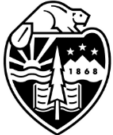Sagebrush
Event website.
The PNW Section Summer Meeting and Tour will be May 29-31 in Chewelah, WA.
- Forest grazing, cover crop grazing, silvopasture, hay production, seedstock beef production, water quality, apex predators, tribal history and issues
- Headquarters: Mistequa Casino Hotel (pronounced Mist-a-quah), 2545 Smith Rd, Chewelah, WA 99109
Workshop flyer.
The first day will cover a variety of topics such as soil ecology, plant identification, invasive annual grass and juniper management, and the foundations behind applying remotely sensed data. The second day will focus on taking the foundations from day 1 and learning how to ensure that planning and management meaningfully influences landscape scale dynamics. Topics will include defending and growing core rangelands, identifying threats, prioritizing areas of ecological importance, synthesizing remotely sensed data, and applying different types of knowledge to address threats at multiple scales on the ground knowledge to manage at meaningful scales. For those of you familiar, this will be similar to the college science in the sagebrush steppe field training we do for universities but targeted for natural resource professionals.
The training is $100 and will include all meals. Registration will open in March.
View article.
Predicted fire-moderation benefits over the first 4 years of fuel break implementation were modest and variable, but, generally, increases in exotic annual grasses and their associated fire risks were not observed. Nonetheless, ancillary evidence from shrublands would suggest that treatment-induced shifts from shrub to herbaceous fuel dominance are expected to improve conditions for active fire suppression in ways not readily represented in available fire models.
The SageSTEP research team invites you to join us for a tour of the Onaqui research site near Tooele, Utah on May 21, 2024. We will tour the SageSTEP (https://sagestep.org/) shrubland network, SageSTEP woodland network and NEON sites (https://www.neonscience.org/field-sites/onaq), hear results from the past 15 years of data collection, and discuss management needs and research priorities for the next decade. We are particularly interested in hearing management perspectives on areas of greatest future need. 2024 field tour flyer
Logistics
Tooele is less than an hour from SLC. Lodging options include the Holiday Inn and Best Western. We recommend SUV/Trucks, particularly if there is rain prior to the tour.
Meet at 8am on Tuesday, May 21 at the Holiday Inn in Tooele (Address: 1531 N Main St, Tooele, UT 84074) to carpool/caravan to the Onaqui site. We plan to return to Tooele by 5pm. Please bring adequate food/water and be prepared to be outside all day.
There will be a no-host dinner on Monday, May 20 at 6 pm for any who can join.
Please RSVP to Lisa Ellsworth at: lisa.ellsworth@oregonstate.edu
View article.
We tested how sagebrush transplant survival and size (canopy volume) are affected by age at the time of planting (10 classes, 6−24 wk), planting season (fall versus spring), and invasive annual grass competition (low/high) with a randomized factorial design over 2 yr. Survival was lower for age classes under 10 or 12 wk (in yr 1 and 2, respectively) but relatively similar from 12 to 24 wk. Fall-planted transplants had lower survival but increased canopy volume compared with spring-planted transplants. Survival and canopy volume decreased with competition with annual grasses. Our results suggest that land managers should consider planting younger transplants than previously thought and controlling invasive annual grasses before planting sagebrush transplants to increase long-term survival and canopy volume.
View synthesis.
This review revealed tradeoffs in woody fuel treatments between reducing canopy fuels vs. increasing understory herbaceous vegetation (fuels) and fire behavior. In pinyon-juniper expansion areas, all treatments decreased crown fire risk. Prescribed fire and cut and broadcast burn treatments reduced woody fuels long-term but had higher risk of invasion. Mechanical treatments left understory vegetation intact and increased native perennial plants. However, cut and leave treatments increased downed woody fuel and high-intensity wildfire risk, while cut and pile burn and mastication caused localized disturbances and annual grass invasion. Ecological outcomes depended on ecological resilience; sites with warm and dry conditions or depleted perennial native herbaceous species experienced lower recovery and resistance to invasive annual grasses. In invasive annual grass dominated areas, high-intensity targeted grazing reduced fine fuels but required retreatment or seeding; in intact ecosystems with relatively low shrub cover, dormant season targeted grazing reduced fine fuel and thus fire spread. Preemergent herbicides reduced annual grasses with differing effects in warm and dry vs. cool and moist environments.
Instructor: Arnold (Jerry) Tiehm, Great Basin Flora Specialist, atiehm@unr.edu
Description: This three-day short course covers the unique taxonomy associated with the sunflower Family, Asteraceae. Basic terminology, dissection skills, and use of a key are critical elements of this class. The course will cover not only how to identify sunflowers, but how to collect and press them for future reference or for the purpose of mailing to others for identification or verification. You can anticipate seeing about 60 different genera. This class is for participants with beginner through intermediate skills.
This class may be taken for 1 unit of optional credit during either semester. Let the instructor know if you want to receive credit so you can obtain a class number. You must also pay the separate credit fees with UNR.
Class size is limited to 30 participants.
When: July 8-10, 2024. Class will be from 8:00 am -12:00 pm, one hour lunch break, 1 pm – 5 pm daily.
Where: It will be held in room 300G of Fleischman Agriculture at UNR. Hot water and some coffee and tea will be provided.
Cost: $ 240.00 non-student, $ 120.00 student. Plan on bringing a check to class made out to Board of Regents.
Sign up by emailing the instructor at atiehm@unr.edu.
Webinar recording.
Feb 29 2024 Missoula Fire Lab Seminar Series Presenter: Karen Short, RMRS Research Ecologist.
Webinar recording.
Webinar sessions will be half presentation and half question and answer. All presenters are scientists at the Rocky Mountain Research Station.
View article.
Biodiversity is threatened due to land-use change, overexploitation, pollution, and anthropogenic climate change, altering ecosystem functioning around the globe. Protecting areas rich in biodiversity is often difficult without fully understanding and mapping species’ ecological niche requirements. As a result, the umbrella species concept is often applied, whereby conservation of a surrogate species is used to indirectly protect species that occupy similar ecological communities. One such species is the greater sage-grouse (Centrocercus urophasianus), which has been used as an umbrella to conserve other species within the sagebrush (Artemisia spp.) ecosystem. Sagebrush-steppe ecosystems within the United States have experienced drastic loss, fragmentation, and degradation of remaining habitat, threatening sagebrush-dependent fauna, resulting in west-wide conservation efforts to protect sage-grouse habitats, and presumably other sagebrush wildlife. We evaluated the effectiveness of the greater sage-grouse umbrella to conserve biodiversity using data-driven spatial occupancy and abundance models for seven sagebrush-dependent (obligate or associated) species across the greater Wyoming Basins Ecoregional Assessment (WBEA) area (345,300 km2) and assessed overlap with predicted sage-grouse occurrence. Predicted sage-grouse habitat from empirical models only partially (39–58%) captured habitats identified by predicted occurrence models for three sagebrush-obligate songbirds and 60% of biodiversity hotspots (richness of 4–6 species). Sage-grouse priority areas for conservation only captured 59% of model-predicted sage-grouse habitat, and only slightly fewer (56%) biodiversity hotspots. We suggest that the greater sage-grouse habitats may be partially effective as an umbrella for the conservation of sagebrush-dependent species within the sagebrush biome, and management actions aiming to conserve biodiversity should directly consider the explicit mapping of resource requirements for other taxonomic groups.








